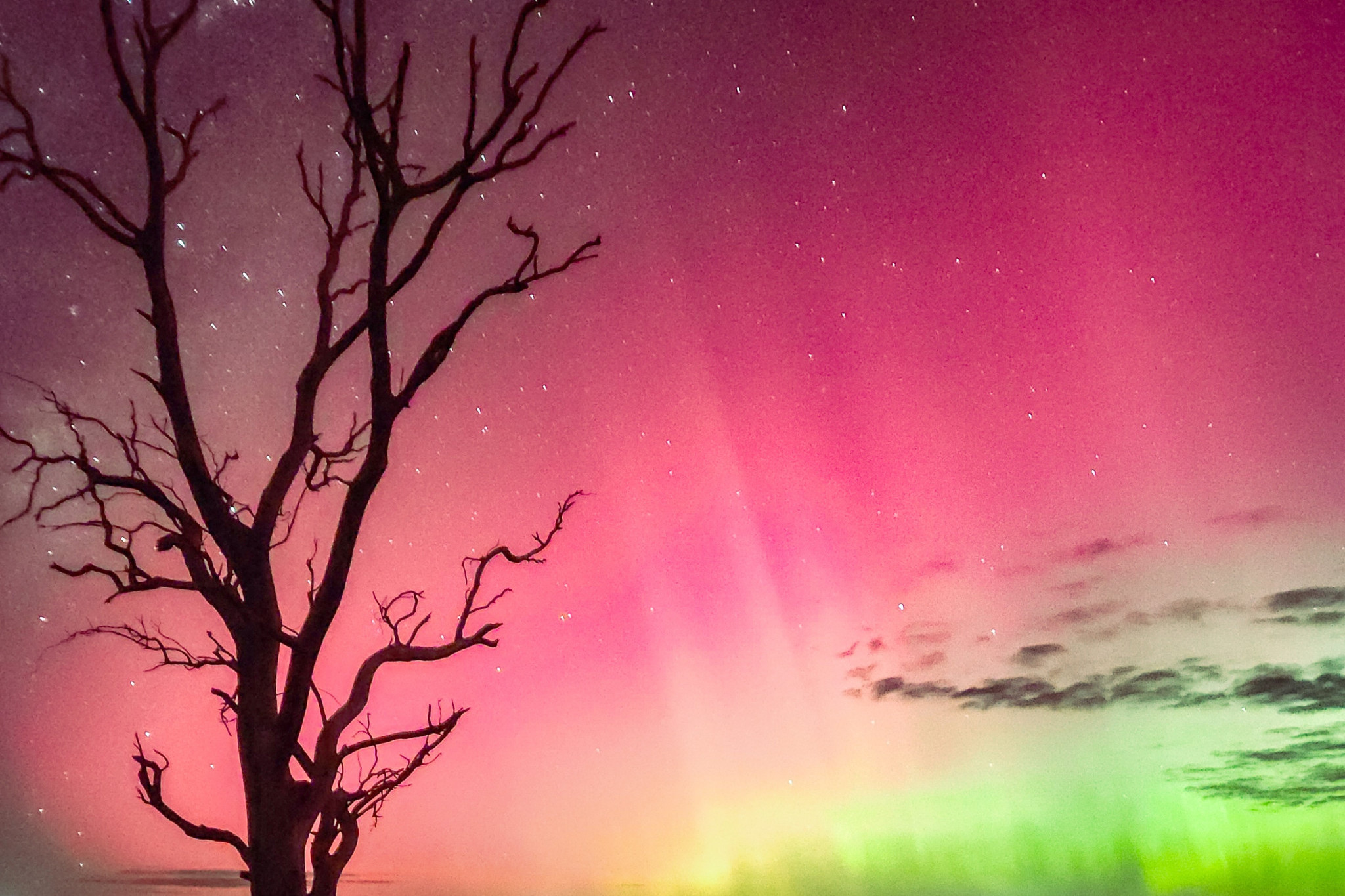General News
18 May, 2024
Thousands gaze skywards in awe-rora
Bree Myers captured this stunning photo of the aurora australis in Dimboola at the weekend.

Bree Myers captured this stunning photo of the aurora australis in Dimboola at the weekend.
Also known as the southern lights, and sister to the more well known aurora borealis or northern lights, the phenomenon is rarely seen this far north except during times of severe geomagnetic storms.
The sun gives us light and heat, but also sends out many other kinds of energy particles which we don’t notice under the protection of our atmosphere and our planet’s magnetic fields.
These are called solar flares, solar storms, or a coronal mass ejections (CMEs).
Some of the high-energy particles strike our planet’s magnetic field and follow it down into our atmosphere at the North and South magnetic poles.
The particles react with either the oxygen in our atmosphere, creating red or green light, or the nitrogen, creating green and purple light.
The aurora phenomenon has also been captured on other planets such as Saturn and Jupiter by NASA's Hubble Space Telescope.
Last weekend's CME was particularly large - the most extreme since 2003 - which is why the aurora was visible in Australia.
Scientists say we could be seeing more of these beautiful colours in our skies later this year.